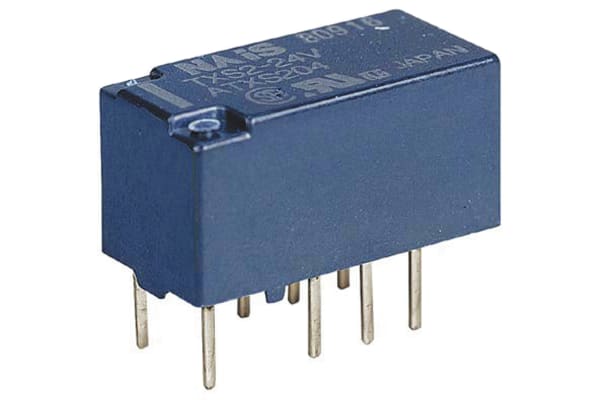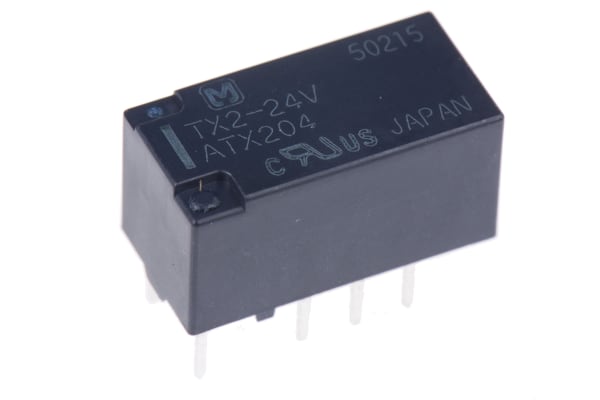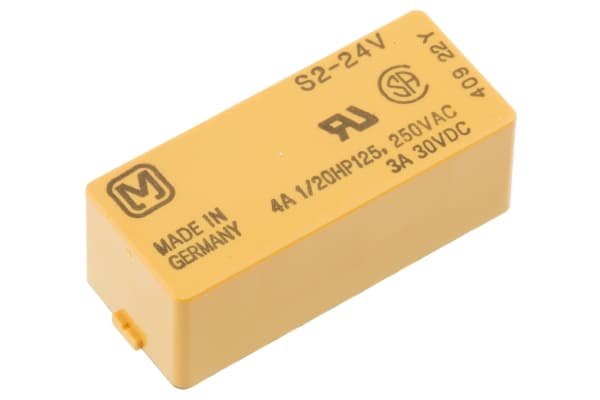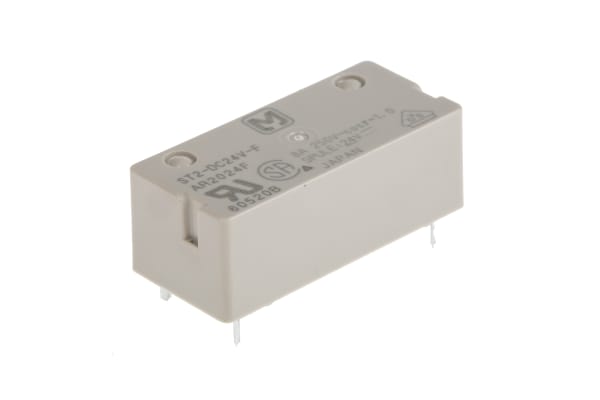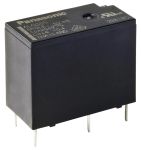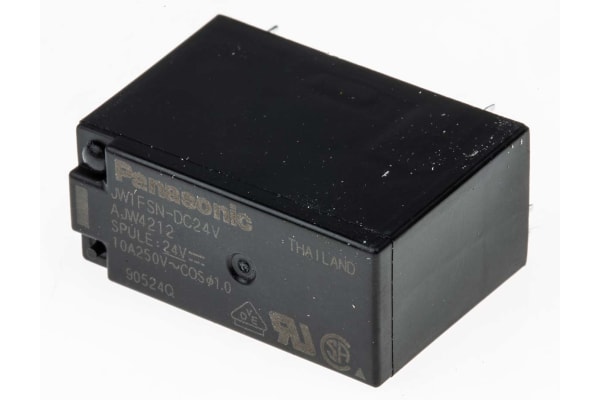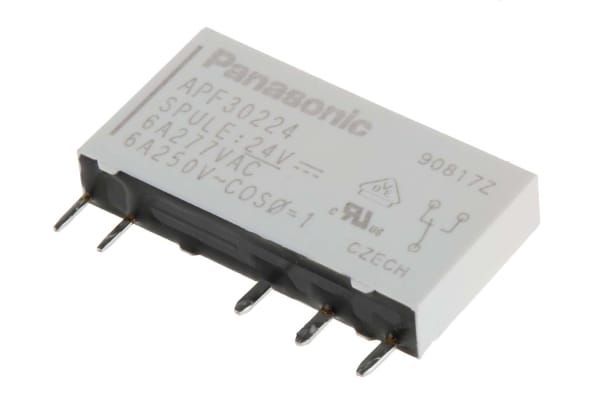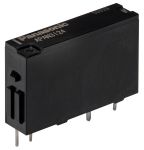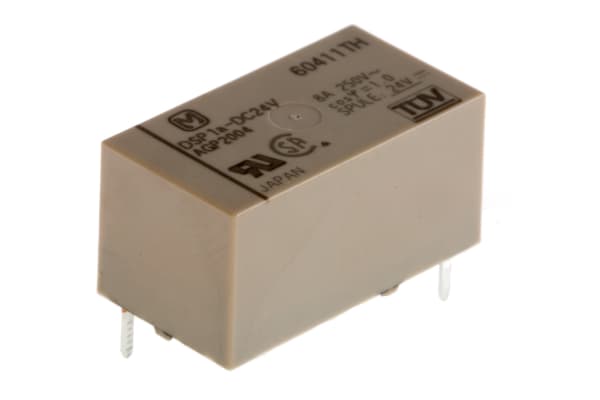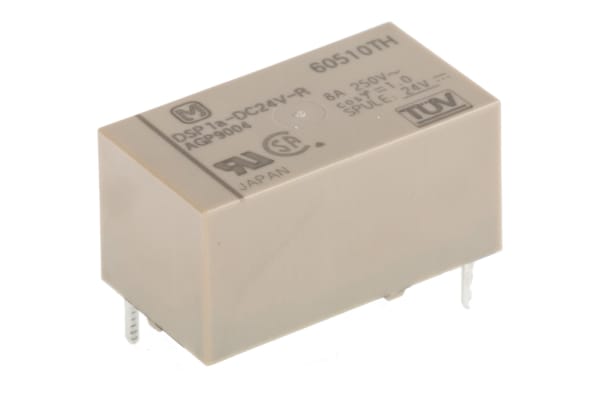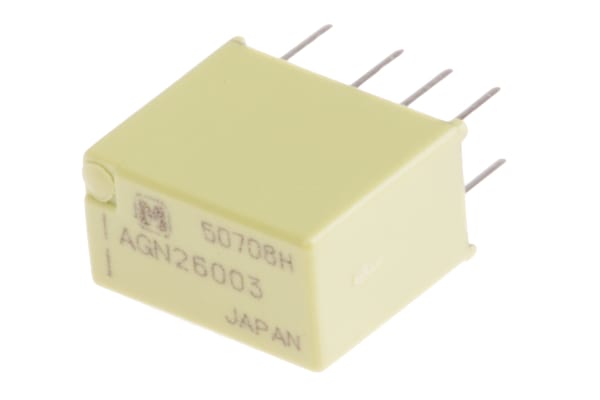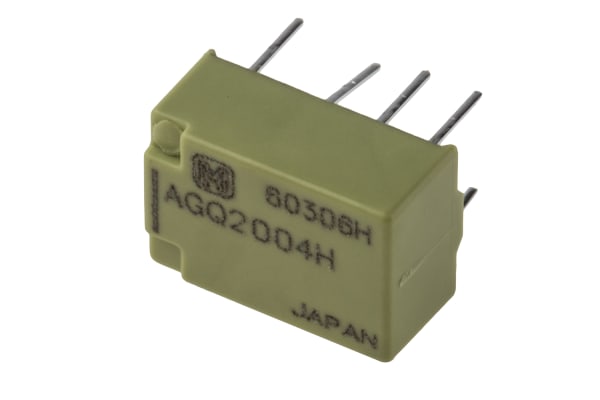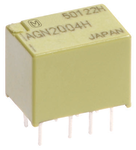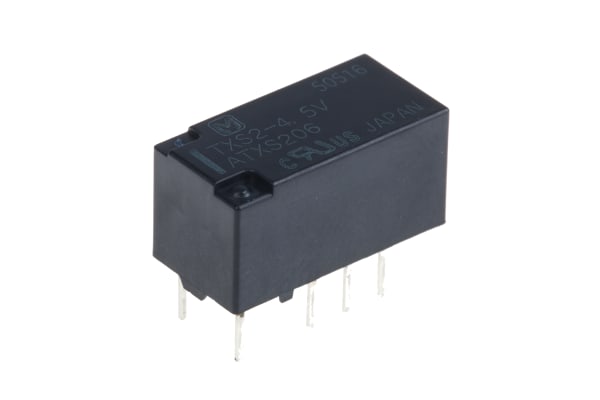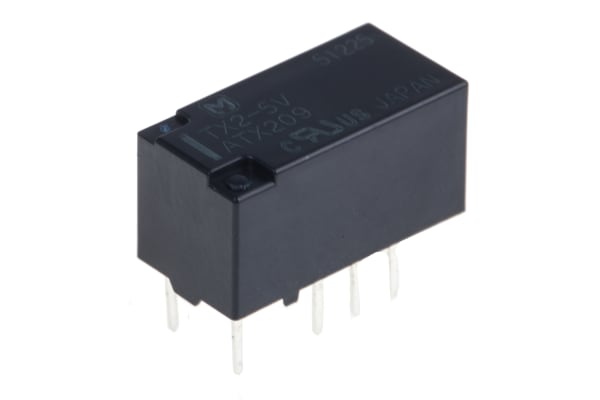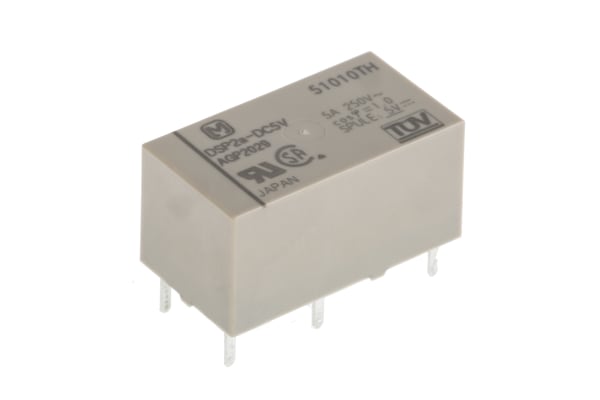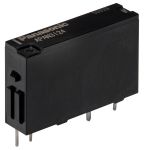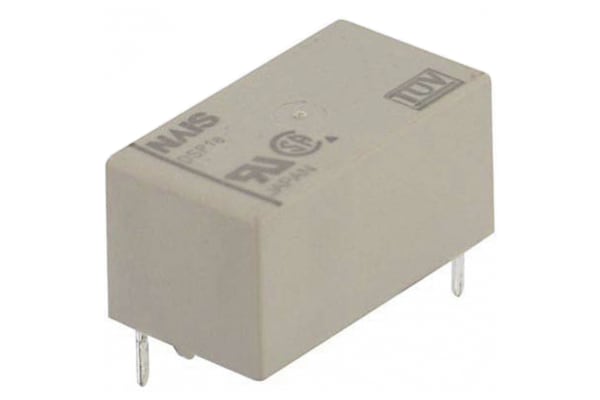Non-Latching Relays
Relays are electrical switches that are operated by electrical impulses with the primary function to open and close a circuit, they can also be referred to as industrial switches. There are 2 main types available, latching and non–latching relays.How do non-latching relays work?Non-latching relays are in a normally closed (NC) position and will stay in this state without power. When power passes through the circuit, the relay switched to a normally open (NO) position by using an internal coil to generate a magnetic force, holding this NO position. Once the current is turned off, it returns to the NC position. This makes non-latching relays well suited to push-button applications like keyboards and micro-controller input buttons.What are non-latching relays used for?Non-latching relays are highly durable and versatile components, making their performance long lasting and suitable for use in a wide range of applications, such as:Automotive enginesHousehold appliancesIndustrial machineryMedical equipmentTelecommunications equipmentWhat is the difference between latching and non-latching relays?Both types of relays in similar in design and function, however, a significant difference between them is that a latching relay will remain in the last position it when it was last powered, whereas a non-latching goes back to its normal position. This makes each more type of relay suitable for different applications. Considerations when selecting a relayWhen choosing a relay, it is important to consider a number of specifications to ensure it is fit for purpose, some factors include:Coil voltage – the required voltage to actuate the switching mechanism. If a voltage is too high this could damage the components, if it is too low then it will not actuate. Contact configuration – This is the state the contacts are in without power. For example SPST, single pole single throw.Contact material – the relay contacts are available in many materials that have certain properties. Common materials are gold, silver, tin oxide and nickel Coil power – the amount of power (watts) the coil operates at. This must match the power in the circuit for correct function. Coil resistance – the amount of resistance (ohms) in the circuit that the coil creates.
-
Panasonic, 24V dc Coil Non-Latching Relay DPDT, 1A Switching Current PCB Mount, 2 Pole, TXS2-24V
IDR73,527.89 -
Panasonic, 24V dc Coil Non-Latching Relay DPDT, 2A Switching Current PCB Mount, 2 Pole, TX2-24V
IDR48,983.63 -
Panasonic, 24V dc Coil Non-Latching Relay DPDT, 8.4mA Switching Current PCB Mount, 2 Pole, S2-DC24V
IDR224,569.49 -
Panasonic, 24V dc Coil Non-Latching Relay DPNO, 8A Switching Current PCB Mount, 2 Pole, ST2-DC24V-F
IDR146,321.55 -
Panasonic, 24V dc Coil Non-Latching Relay SPDT PCB Mount Single Pole, ALQ1F24
IDR31,467.00 -
Panasonic, 24V dc Coil Non-Latching Relay SPDT PCB Mount Single Pole, JW1FSN-DC24V
IDR228,135.75Pack (1 Pack of 5) -
Panasonic, 24V dc Coil Non-Latching Relay SPDT, 16A Switching Current PCB Mount Single Pole, ALZ12B24
IDR39,858.20 -
Panasonic, 24V dc Coil Non-Latching Relay SPDT, 3A Switching Current PCB Mount Single Pole, DS1E-S-DC24V
IDR91,673.86 -
Panasonic, 24V dc Coil Non-Latching Relay SPDT, 6A Switching Current PCB Mount Single Pole, APF30224
IDR183,137.94 -
Panasonic, 24V dc Coil Non-Latching Relay SPNO, 5A Switching Current PCB Mount Single Pole, APAN3124
IDR77,513.71 -
Panasonic, 24V dc Coil Non-Latching Relay SPNO, 5A Switching Current PCB Mount Single Pole, DSP1A-DC24V
IDR75,311.02 -
Panasonic, 24V dc Coil Non-Latching Relay SPNO, 5A Switching Current PCB Mount Single Pole, DSP1A-DC24V-R
IDR71,744.76 -
Panasonic, 3V dc Coil Non-Latching Relay DPDT, 1A Switching Current PCB Mount, 2 Pole, AGN200A03
IDR55,172.14 -
Panasonic, 3V dc Coil Non-Latching Relay DPDT, 1A Switching Current PCB Mount, 2 Pole, AGN26003
IDR98,596.60 -
Panasonic, 4.5V dc Coil Non-Latching Relay DPDT PCB Mount, 2 Pole, AGQ2004H
IDR1,853,091.63Tube (1 Tube of 50) -
Panasonic, 4.5V dc Coil Non-Latching Relay DPDT, 1A Switching Current PCB Mount, 2 Pole, AGN2004H
IDR4,000,189.93Tube (1 Tube of 50) -
Panasonic, 4.5V dc Coil Non-Latching Relay DPDT, 1A Switching Current PCB Mount, 2 Pole, AGN2004H
IDR95,974.35 -
Panasonic, 4.5V dc Coil Non-Latching Relay DPDT, 1A Switching Current PCB Mount, 2 Pole, AGN200A4H
IDR38,179.96 -
Panasonic, 4.5V dc Coil Non-Latching Relay DPDT, 1A Switching Current PCB Mount, 2 Pole, TXS2-4.5V
IDR1,516,080.06Tube (1 Tube of 40) -
Panasonic, 5V dc Coil Non-Latching Relay 4PST-NO, 38.5mA Switching Current PCB Mount, 4 Pole, S4-DC5V
IDR204,535.50 -
Panasonic, 5V dc Coil Non-Latching Relay DPDT, 2A Switching Current PCB Mount, 2 Pole, TX2-5V
IDR30,208.32 -
Panasonic, 5V dc Coil Non-Latching Relay DPNO, 5A Switching Current PCB Mount, 2 Pole, DSP2A-DC5V
IDR128,700.03 -
Panasonic, 5V dc Coil Non-Latching Relay SPNO, 5A Switching Current PCB Mount Single Pole, APAN3105
IDR63,248.67 -
Panasonic, 5V dc Coil Non-Latching Relay SPNO, 5A Switching Current PCB Mount Single Pole, DSP1A-DC5V
IDR96,079.24



